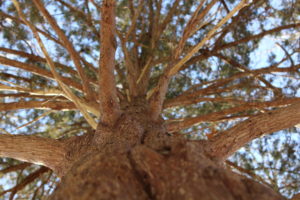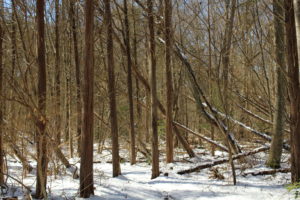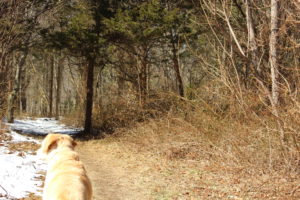Over spring break, I visited my hometown. Mystic, Connecticut is a small little tourist town. During the 1800s, it was one of the most active shipbuilding ports along the East Coast. Later, it transferred its focus to marine engineering, textile mills, and small craft building which carried it forward into the 20th century. Now, most of the towns revenue comes from tourism.
https://www.google.com/maps/d/edit?hl=en&hl=en&mid=1PI1RX1nUS78LHH4YHq9nmRO_oc2jvoR7&ll=41.34474394202414%2C-71.9821799258545&z=14
I went to a small natural area by my house for this assignment, called Beebe Pond Park. This area used to have a textile mill on the land, and stone walls as property borders. The trails are now preserved by a committee and up-kept through volunteers. I heard many birds on my visit, but saw only a few. Outstanding was that of a hawk, which was swooping overhead only briefly. The woody plants, such as the Northern Red Cedar pictured below, were shedding snow and getting ready for the approaching sunny season. Many trees had fallen due to the recent snowstorms.


My dog enjoyed the trip as well!


